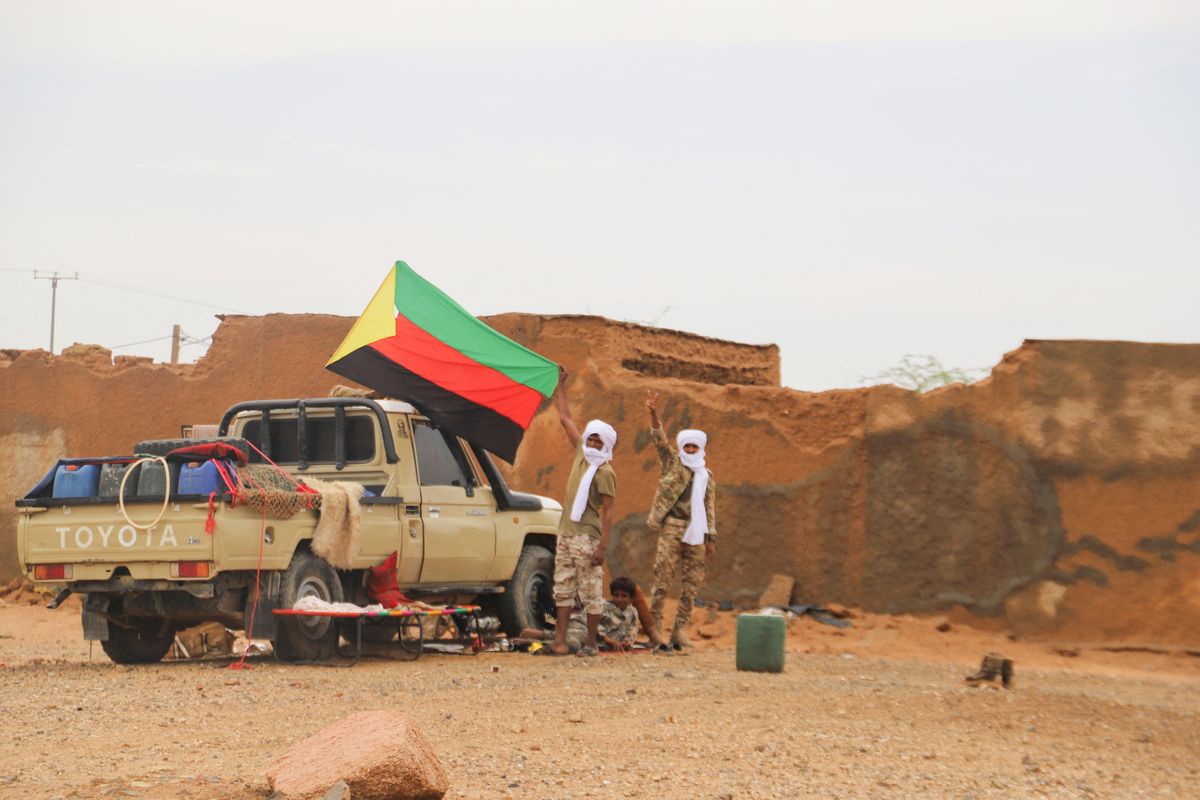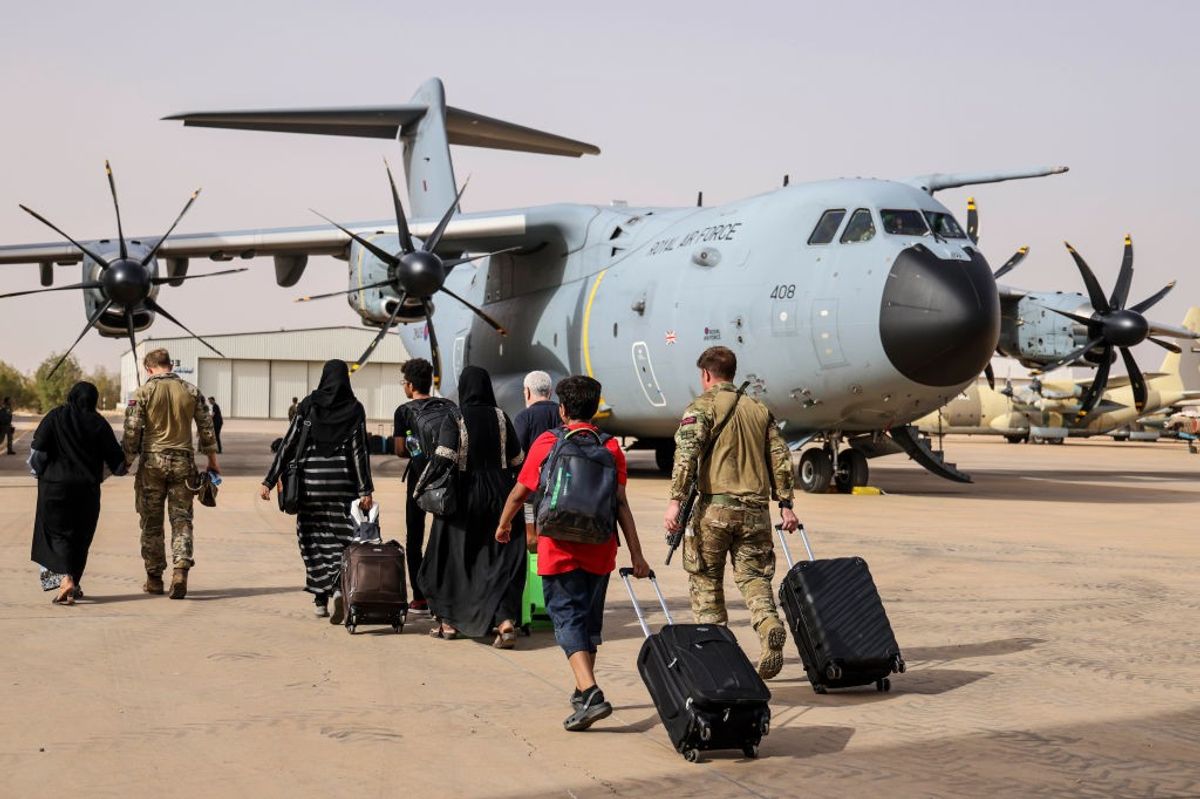BANGUI, Central African Republic – Since May 8, fighting in the southeastern city of Bangassou, the southern town of Alindao and the central mining town of Bria has left more than 300 people dead, 200 injured and 70,000 displaced, according to the U.N.
The spreading violence “is highly worrying and should set off loud alarm bells,” said the U.N. high commissioner for human rights, Zeid Ra'ad Al Hussein.
The burden of providing security here is squarely on the shoulders of the United Nations, with the Central African Republic’s poorly trained, poorly armed national army of about 7,500 soldiers rarely deployed outside the capital.
The U.N. peacekeeping mission here, known as MINUSCA, has about 13,000 security forces spread-out throughout this lawless country. They are required by mandate to protect civilians.
Yet, the mission’s force commander, Lt. Gen. Balla Keïta, told The Cipher Brief that his current troop levels are not enough.
Keïta said MINUSCA can put “the situation under control” by stopping “mass killings and mass fighting” in the country. “But more than that is going to be very difficult,” he said.
Even protecting his own forces has become a challenge for MINUSCA. Militias have recently started targeting U.N. peacekeepers, killing six in one week in early May – the largest loss since the mission started in 2014.
On May 10, Cambodian and Moroccan peacekeepers stopped at a rebel checkpoint in Bangassou, according to an internal U.N. document obtained by The Cipher Brief. After a “negotiation” with the rebels, the U.N. convoy started to pass through but was stopped again. Two U.N. soldiers climbed down from their vehicles to try to talk with the anti-balaka militia again. However, the rebels “started shooting on the convoy” with artisanal rifles and “stabbed” the soldiers with machetes.
Within a few days, the militia attacked Bangassou itself.
While the Moroccans later reported being fired upon by mortars and grenade launchers, a well-placed source within the mission said this isn’t accurate.
The source, who is not authorized to speak to the press, said locals fought off the attackers with sticks, tools, machetes, and some rifles, while the Moroccan soldiers refused to fight and were “afraid to go into the city” to protect civilians.
The U.N. force commander acknowledged there are “limitations” to his forces.
“The mindset of peacekeeping sometimes leaves the troops not understanding what should be the right reaction on time,” Keïta said, “and by the time they start thinking, it’s too late.”
To stop the fighting in Bangassou, the U.N. peacekeeping mission sent in its quick reaction force – the Portuguese special forces contingent – along with attack helicopters. The town is now calm with humanitarian organizations providing food and medical aid, yet fighters still permeate the neighborhoods.
“Armed groups are not in MINUSCA's area of operation,” the well-placed source said. “MINUSCA is in the area of operation of the armed groups.”
Keïta, the U.N. force commander, told Cipher Brief that he is constantly moving forces around to stop violence across the country. “It’s not just about the Portuguese,” he said. “It’s everybody jumping around.”
“The mission can't be everywhere at all times,” according to Evan Cinq-Mars, the United Nations advocate and policy advisor at the non-profit Center for Civilians in Conflict.
Cinq-Mars said the United Nations Security Council should “seriously consider” an increase in the U.N. troop levels here, given the number and scale of threats to civilians and “the extremely limited capacity” of the mission to respond to them.
“I think the main wild card would be the U.S. response,” said Aditi Gorur, who researches peacekeeping issues as a director of the Washington-based Stimson Center think tank.
The U.S. government contributed approximately $386 million for MINUSCA and more than $113 million in humanitarian assistance for the country in Fiscal Year 2016, according to a U.S. State Department official.
“At the moment it doesn’t look very promising that the U.S. would agree to a troop ceiling increase anywhere” in the world, Gorur said.
The Trump administration's proposed budget would slash funding to U.N. peacekeeping missions and humanitarian agencies.
“Proposing such cuts immediately after withdrawing U.S. troops from the counter-Lord’s Resistance Army mission is irresponsible and will leave Central Africans at greater risk to violence from armed groups,” said Paul Ronan, the director of research and policy at the advocacy organization Invisible Children. “Central African civilians will pay the price.”
However, troops from the peacekeeping missions in Liberia and Cote D’Ivoire could be temporarily deployed to the Central African Republic to help fill the vacuum, according to Gorur.
Another possibility is Ugandan forces coming back to C.A.R. wearing blue helmets. Last month, about 1,500 Ugandans ended their mission of fighting the Lord’s Resistance Army here with American special forces.
Representatives of the C.A.R. government traveled to Uganda in April to discuss the possibility of a Ugandan troop return. The African Union also sent a representative to New York to talk about the topic, according to Parfait Onanga-Anyanga, MINUSCA’s top leader.
Yet this approach would still require an increase in the troop levels.
Regardless of whether or not additional U.N. troops arrive, Ronan said the United Nations needs to provide the existing peacekeepers with better training. He said the U.N. also needs to “hold them accountable to effectively implementing their civilian protection mandate.”
Zack Baddorf is a journalist and filmmaker based in Central African Republic with more than 15 years of experience producing award-winning stories in more than 30 countries, including Syria, Ukraine, Afghanistan, Pakistan, the West Bank, Kashmir, and Iraq, as well as rebel-held territory in Sri Lanka and Burma. He has reported for the New York Times, Washington Post, BBC, Reuters, AP, CBS, NPR, the Wall Street Journal, Christian Science Monitor, Newsweek, VICE, RYOT, Al Jazeera English, and other international publications.












